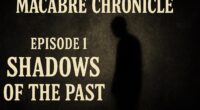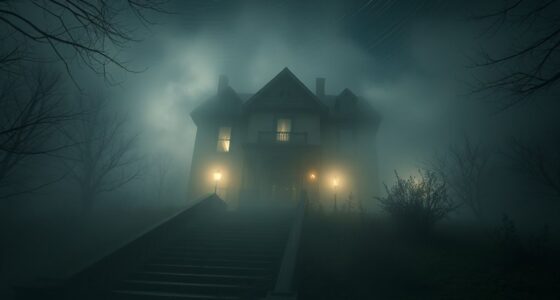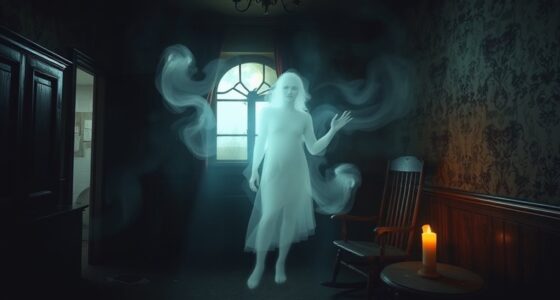To tell if a ghost is dangerous or just mischievous, pay attention to its behaviors and physical signs. If it causes fear, aggressive actions, or tries to control your environment, it’s likely harmful. Playful spirits often move objects gently or make light noises, while malicious ones cause disturbances and emotional distress. Trust your instincts and observe patterns. If you want to understand more about how to recognize and handle these spirits, keep exploring these signs carefully.
Key Takeaways
- Signs of malevolent spirits include aggressive behaviors, physical harm, or persistent disturbance, indicating danger.
- Playful spirits often cause harmless noises, gentle touches, or light object movement without threatening intent.
- Physical signs like objects moving or knocking suggest active paranormal presence; context helps determine intent.
- Repeated unsettling or aggressive behaviors, feelings of fear, and energy drain point to a potentially dangerous spirit.
- Recognizing patterns, emotional responses, and environmental cues can help differentiate between mischievous and harmful spirits.
Recognizing the Signs of a Dangerous Spirit
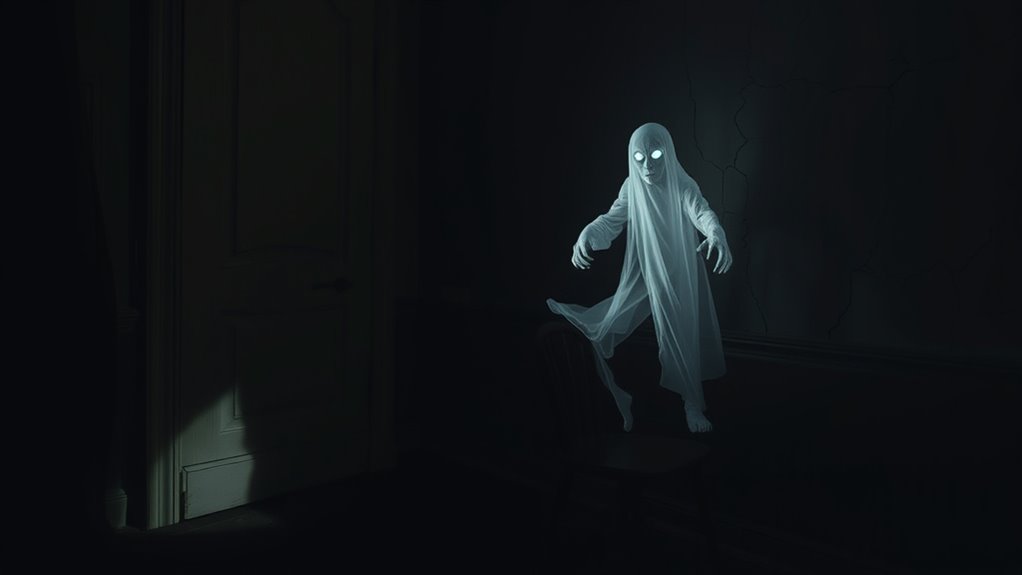
While not all spirits pose a threat, recognizing the signs of a dangerous one is essential for your safety. Pay attention to sudden, intense feelings of fear or anger during spirit communication; these emotions can signal malevolence. Unexplained physical sensations, like chills or pain, may also indicate a harmful presence. Look for aggressive or disruptive behaviors, such as objects moving unexpectedly or loud noises without cause. Using meditation techniques can help you stay centered and aware, making it easier to identify negative energies. Developing a spiritual awareness can empower you to better interpret these warning signs and protect yourself. Trust your intuition—if something feels off or malicious, it’s best to cease communication. Recognizing spiritual threats involves understanding the different manifestations and knowing how to respond appropriately. Being familiar with common danger signs can help you act swiftly to remove or avoid harmful spirits. Understanding these warning signs allows you to protect yourself and approach spirit encounters cautiously, ensuring your safety remains a priority. Additionally, cultivating paranormal sensitivity can help you distinguish between benign and malevolent entities more effectively.
Differentiating Between Playful and Malevolent Activity
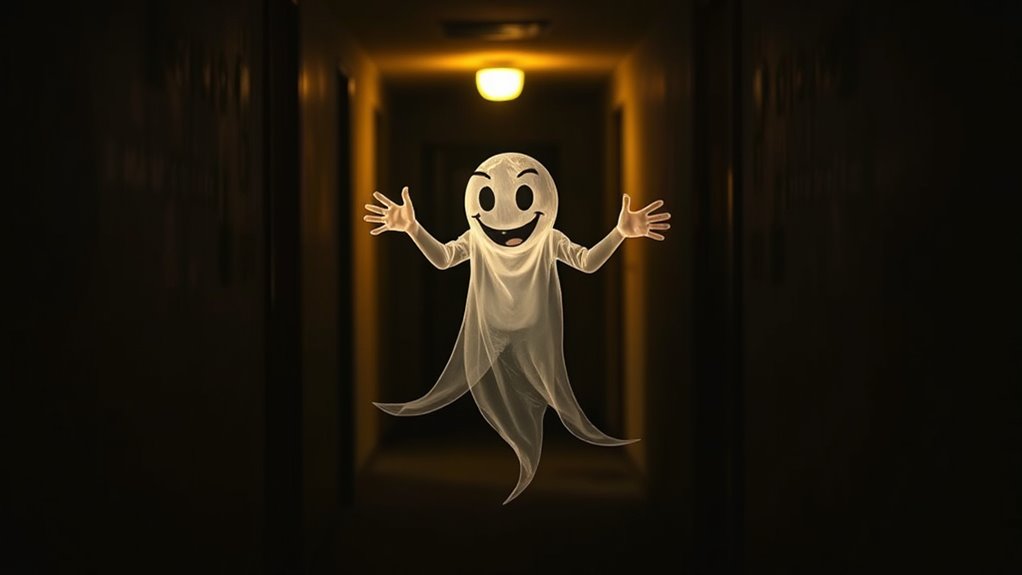
When you notice strange activity, it’s vital to tell if it’s playful or malevolent. Signs of playfulness often include harmless sounds or gentle movements, while malevolent spirits may cause fear or harm. Recognizing symbolism in such encounters can also provide insights into their true nature. Additionally, understanding spiritual intent can help distinguish whether a presence is benign or potentially dangerous. Observing the environment and interior decor can sometimes offer clues about the spirit’s origin or purpose. Incorporating mindful decluttering strategies of your space can also create a calmer environment that reduces the likelihood of negative energies.
Signs of Playful Activity
Recognizing playful activity from a ghost can often be challenging, but certain signs help distinguish it from malevolent behavior. Playful spirits often leave behind clear signs rooted in spiritual symbolism and energy imprints. For example, you might notice objects moving unexpectedly, lights flickering in a cheerful pattern, or gentle touches that feel harmless. These signs suggest the spirit is engaging in mischief rather than causing harm. Pay attention to subtle clues like faint laughter, playful whispers, or objects appearing in unusual places—these often reflect a spirit’s desire to interact lightheartedly. Unlike malevolent activity, playful spirits tend to radiate positive energy and exhibit behaviors that evoke curiosity rather than fear. Recognizing these signs helps you understand the spirit’s intent and differentiate harmless fun from danger. Being aware of spiritual symbolism can also provide insights into the spirit’s mood and intentions, helping you respond appropriately. Additionally, understanding resources and tools available for spiritual communication can aid in assessing the spirit’s nature more accurately. Developing an understanding of spirit energy patterns can further assist in identifying whether the activity is benign or potentially harmful. Observing the environmental context can also reveal whether the activity aligns with playful or malevolent intentions. Sometimes, paying attention to energy fluctuations can offer deeper clues about the spirit’s emotional state and motives.
Indicators of Malevolence
Indicators of malevolence are often starkly different from playful ghostly activity, signaling a more serious threat. When you notice aggressive or threatening behaviors—such as sudden chills, loud noises, or objects flying—you should assess your spiritual clarity and energy analysis. Malevolent spirits tend to drain your energy and create a heavy, oppressive atmosphere. They may attempt to manipulate your emotions or induce fear, making it crucial to stay calm and focused. If your energy feels consistently disturbed or if you sense a malicious intent behind strange occurrences, these are clear signs of malevolence. Recognizing spiritual energy imbalances can be key to understanding the nature of the ghostly presence. Always trust your intuition, and consider seeking guidance from spiritual experts who can help interpret your energy and differentiate between benign and harmful activity.
Safety Measures to Take
To effectively differentiate between playful and malevolent ghost activity, you need to stay alert and observant of the patterns and intensity of the phenomena. If you notice sudden changes in behavior, spirit possession, or aggressive movements in haunted locations, take it seriously. Keep a safe distance and avoid provoking the spirit. If activity escalates or feels threatening, leave immediately and seek help from a professional paranormal investigator. Do not attempt to communicate directly if you sense malevolence. Use protective measures like grounding, carrying talismans, or prayer. Remember, playful spirits usually show harmless signs, while malevolent ones tend to cause harm or fear. Trust your instincts, and prioritize your safety over curiosity in any haunted situation.
Common Behaviors of Mischievous Spirits
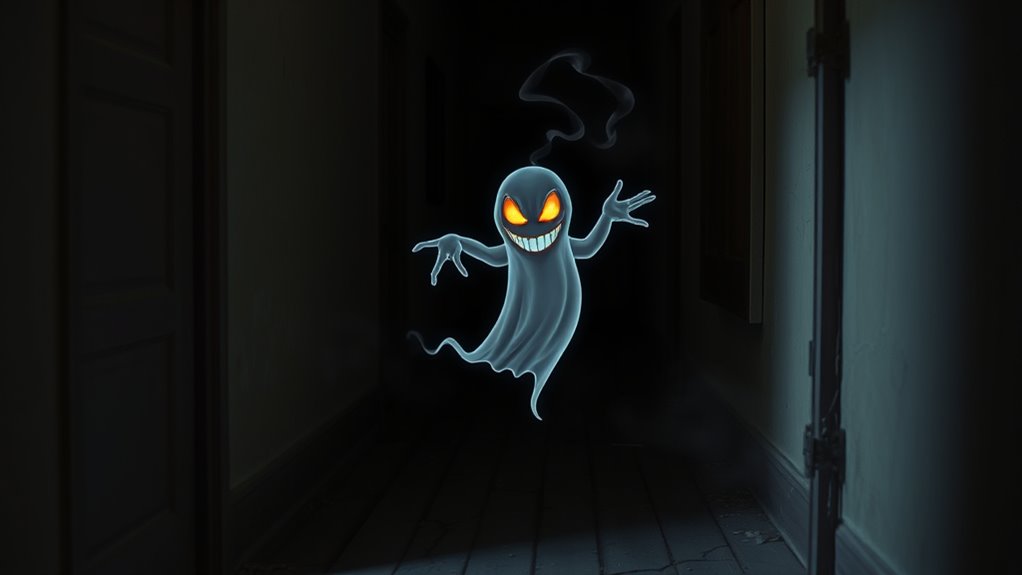
Mischievous spirits often play tricks that catch you off guard, like moving objects unexpectedly or making them vanish. You might notice sudden drops in temperature or chilly drafts without explanation, adding to the mystery. Unexplained noises—knocks, whispers, or footsteps—are also common signs of their mischievous antics.
Playful Object Manipulation
Many spirits known for their playful nature enjoy manipulating objects around them, often surprising or amusing those nearby. This behavior is commonly linked to poltergeist phenomena, where objects move, fall, or vanish seemingly on their own. Such activity isn’t always harmful but can be unsettling. If you want to understand or communicate with these spirits, spirit communication techniques, like EVP recordings or Ouija boards, might reveal their intent. Playful object manipulation often serves as a way for mischievous spirits to get your attention or test boundaries. While it can be entertaining, it’s essential to stay cautious, as not all spirits with this behavior are harmless. Recognizing their playful tendencies helps you differentiate between mischief and potential danger.
Sudden Temperature Changes
Playful spirits often manipulate objects to grab your attention, but they’re also known for causing sudden drops or rises in temperature. These fluctuations are classic signs of energy disturbances, often linked to spiritual symbolism that suggests a spirit’s presence. When temperatures plummet unexpectedly, it’s as if the spirit is trying to communicate or shift energy in its environment. Conversely, sudden warmth may indicate a mischievous spirit expressing playful intent. Such temperature changes can be unsettling, but they usually aren’t harmful. Instead, they serve as a reminder that energy disturbances are at play, reflecting the spirit’s mischievous nature. Recognizing these patterns helps you understand whether you’re dealing with a harmless playful spirit or something more ominous.
Unexplained Noises
Unexplained noises often serve as the most noticeable signs of mischievous spirits at work. These sounds, like footsteps, knocking, or distant whispers, are spectral manifestations that can disrupt your peace. Mischievous spirits use energy resonance to produce these noises, manipulating ambient energy to create unsettling sounds. You might hear a sudden bang or faint laughter when no one’s around, signaling their playful interference. These noises aren’t necessarily harmful but indicate their presence and desire for attention. Pay attention to patterns—sometimes, these sounds increase when you’re near specific objects or areas. Recognizing these signs helps you understand their behavior and decide how to respond, whether by addressing the energy or seeking help to dispel their mischief.
Indicators of a Harmful Entity
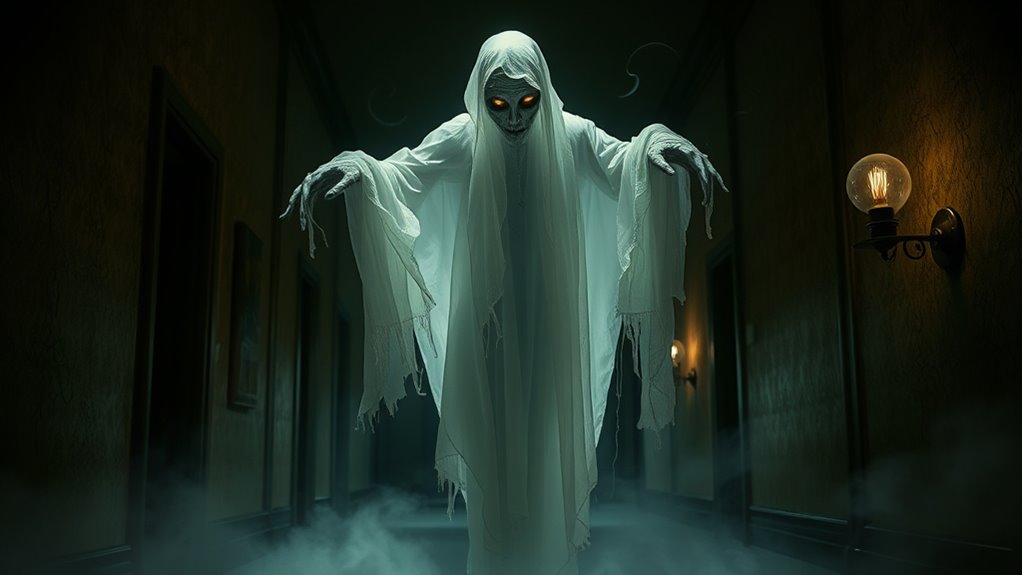
How can you tell if a ghostly presence is truly harmful? One key indicator is the nature of paranormal communication. If the entity repeatedly exhibits aggressive or disturbing behavior during interactions—such as loud noises, threatening voices, or physical sensations—it may be classified as dangerous. Pay attention to patterns: if the spirit’s messages or actions seem malicious or intentionally disruptive, it suggests a harmful spirit. Spirit classification can help determine the level of threat, with malevolent entities often linked to feelings of fear, unease, or physical harm. Additionally, if the presence causes ongoing distress or attempts to control your environment, these are signs that the entity isn’t just mischievous but potentially harmful. Recognizing these signs helps you respond appropriately.
The Role of Physical Interactions and Their Significance
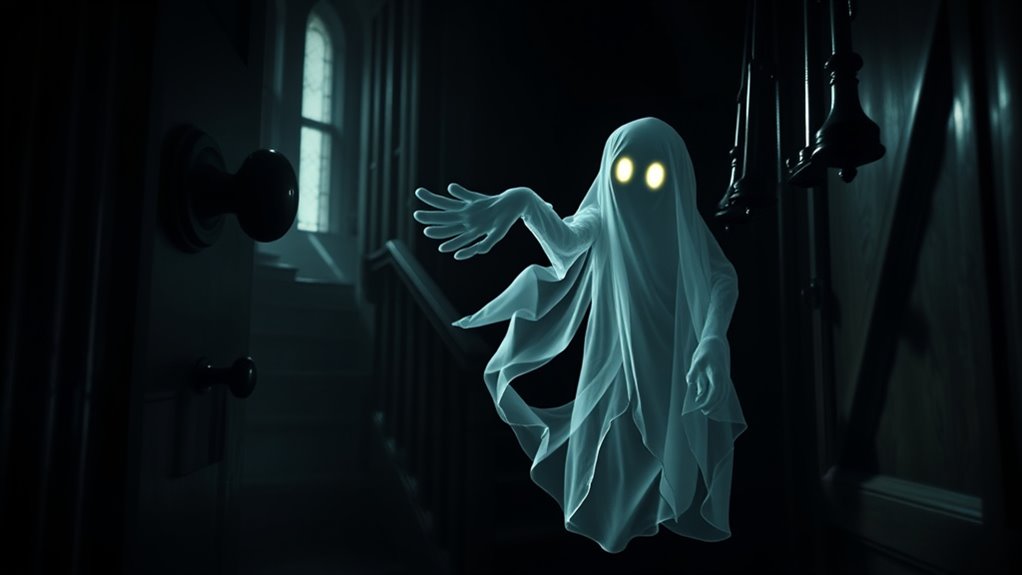
Physical interactions, like touch and contact, often reveal a ghost’s power and presence. These signs of activity can influence how you perceive the situation, making the experience more intense or unsettling. Understanding their significance helps you interpret whether these interactions are harmless or potentially dangerous.
Touch and Contact Power
Touch and contact often serve as the most direct way for spirits to interact with the living, making physical interactions a powerful indicator of their presence. When you feel a sudden chill or a gentle touch, it’s a sign that spiritual energy has crossed the paranormal boundaries. These physical interactions can be subtle or startling, but they reveal a spirit’s intent to connect or communicate. The power of touch suggests that spirits can influence your environment through these interactions, blurring the line between the physical and spiritual worlds. Recognizing these moments helps you understand that some spirits possess enough energy to break through boundaries and make contact. It’s a clear reminder that, in the domain of the paranormal, physical contact can carry significant meaning.
Signs of Physical Activity
Have you ever experienced objects moving unexpectedly or unexplained knocks at your door? These physical signs often point to activity involving paranormal artifacts or spirit communication techniques. Such movements—furniture shifting, doors creaking open on their own, or objects falling—are classic indicators of spirits making their presence known. Knocks, bangs, or footsteps without explanation also signal physical activity. Recognizing these signs helps you differentiate between natural causes and genuine paranormal interactions. When you notice these disturbances, it’s essential to observe their patterns and consistency. Physical activity can be mischievous or warning, depending on context. Paying attention to these signs allows you to better understand whether the spirit is trying to communicate or if its presence might be more dangerous.
Impact on Perception
When unexplained objects move or strange knocks occur, your perception of the environment shifts, making it harder to distinguish between natural and paranormal causes. These physical interactions often reinforce paranormal myths, fueling beliefs that spirits are actively trying to communicate. They tap into deep-seated fears and symbolisms, where movement or sound becomes a sign of spirit presence. Such interactions skew your understanding, blurring the line between coincidence and supernatural influence. They can lead you to interpret everyday occurrences as evidence of a mischievous or dangerous ghost. Recognizing the role of perception helps you stay grounded, understanding that these physical signs often rely on your interpretation and cultural beliefs surrounding spirit symbolism, rather than definitive proof of paranormal activity.
How to Assess the Intent Behind Unexplained Events
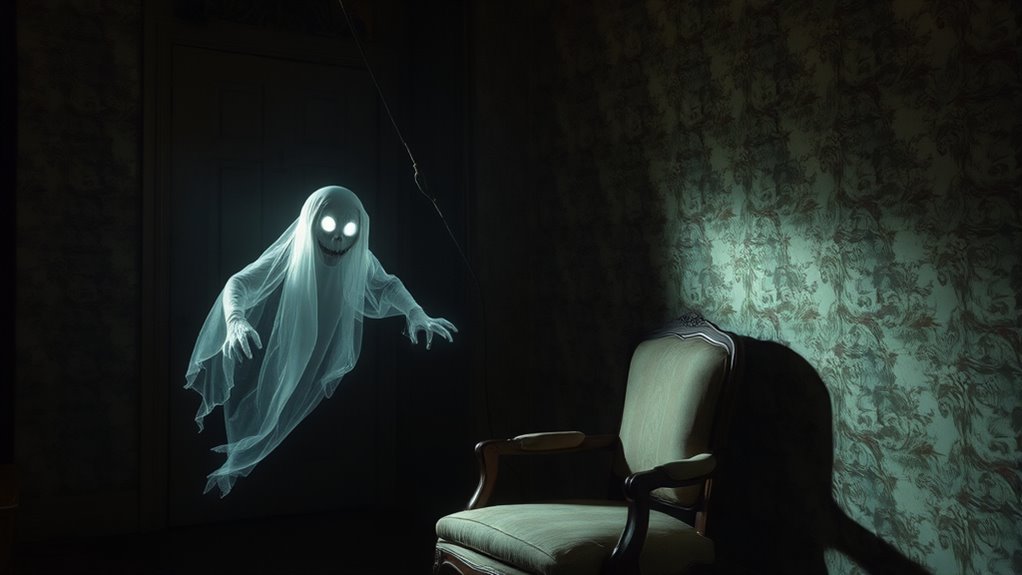
Determining the intent behind unexplained events requires careful observation and critical thinking. Pay attention to recurring patterns or symbols that might carry spiritual symbolism, such as messages or warnings, indicating a benevolent presence. Consider your emotional response—fear, comfort, or curiosity—to gauge whether the event feels helpful or threatening. Psychological interpretations can also shed light; for example, stress or grief might create sensations or sightings that seem supernatural but are rooted in your mind. Avoid jumping to conclusions based solely on fear or coincidence. Instead, analyze the context, consistency, and emotional impact of the events. By combining spiritual symbolism with psychological insights, you can better assess whether the presence is mischievous, protective, or potentially dangerous.
Safety Measures When Confronted With a Troubling Presence
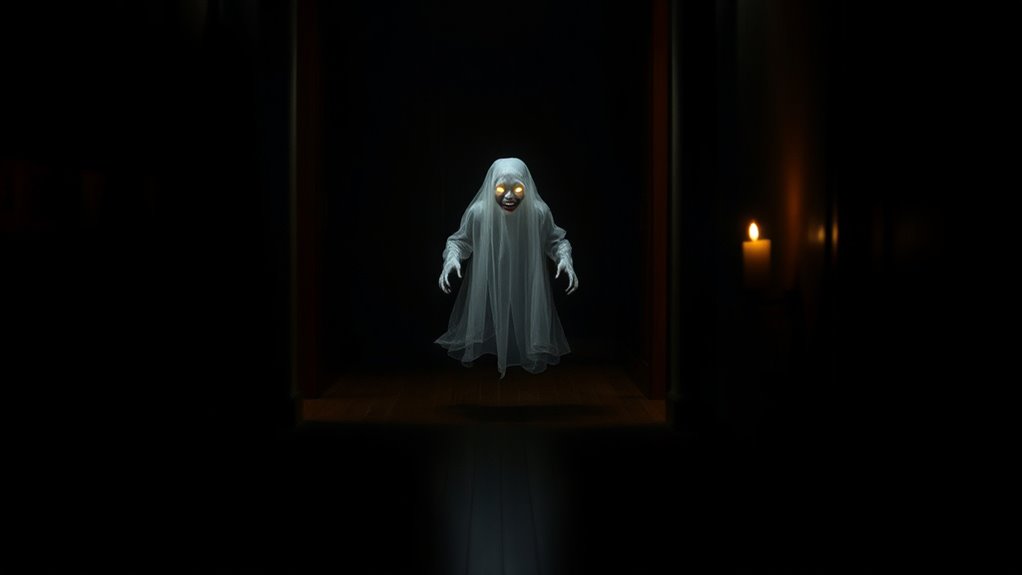
Recognizing the intent behind unexplained events helps you prepare for potential risks, but knowing how to respond safely is equally important. When facing a troubling presence, consider performing a spiritual cleansing to clear negative energies and restore peace. Use protective talismans, such as amulets or symbols, to create a barrier that discourages unwanted spirits from lingering. Keep a calm demeanor; panic can escalate the situation. If possible, gently acknowledge the presence without confrontation, then remove yourself from the area if needed. Remember to keep your environment protected with items like salt lines or holy symbols. These measures help you maintain control and safety, ensuring you don’t escalate the situation while safeguarding your well-being.
Historical and Cultural Perspectives on Spirit Behavior
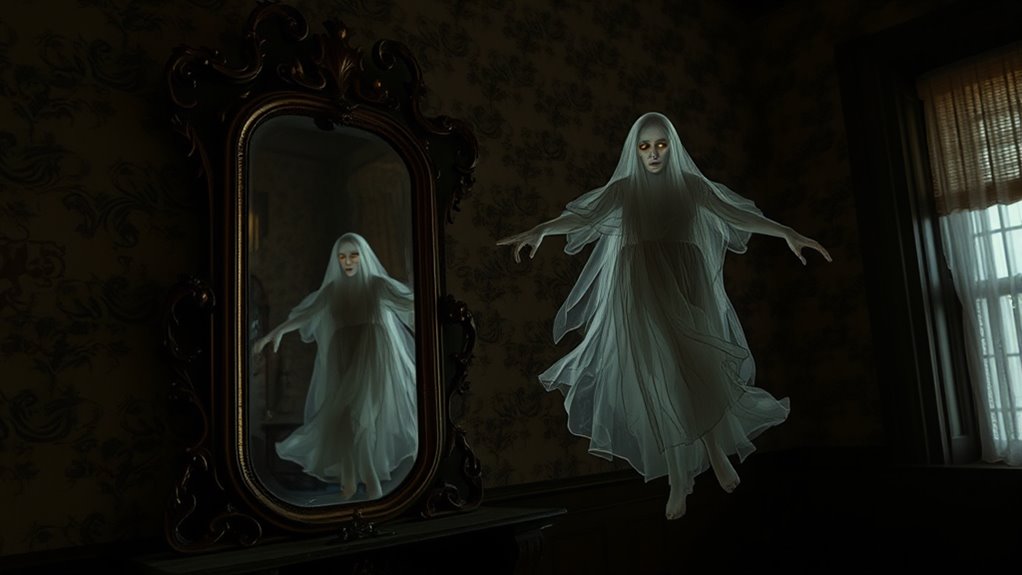
Throughout history and across cultures, spirits have been perceived as both benevolent guides and mischievous tricksters. Many cultures interpret spirits through spiritual symbolism, seeing them as messengers or protectors, while others view them as mischievous entities that disrupt peace. Cultural rituals often reflect these beliefs, with offerings, prayers, or ceremonies aimed at appeasing or communicating with spirits. In some traditions, spirits are revered ancestors who bring wisdom and guidance; in others, they are playful or unpredictable beings causing mischief. These perspectives influence how people respond to unexplained occurrences, shaping whether they see a spirit as dangerous or just mischievous. Understanding these cultural and historical viewpoints helps you better interpret spirit behavior within your own beliefs or experiences.
When to Seek Professional Help or Paranormal Assistance

If you experience persistent, disturbing, or unexplained phenomena that disrupt your daily life or cause fear, it may be time to seek professional help or paranormal assistance. Recognize that strong spiritual energy or ghost myths can sometimes cause confusion, but trust your instincts. When these experiences escalate, such as unexplained noises, apparitions, or feelings of oppression, it’s essential to consult experts. Paranormal investigators can help determine if these signs point to a restless spirit or a genuine haunting. Likewise, spiritual counselors or mental health professionals can assist if your fears stem from anxiety or stress. Knowing when to seek help ensures your safety and peace of mind, distinguishing between mischievous spirits and potentially harmful encounters.
Protecting Yourself From Harmful Paranormal Encounters
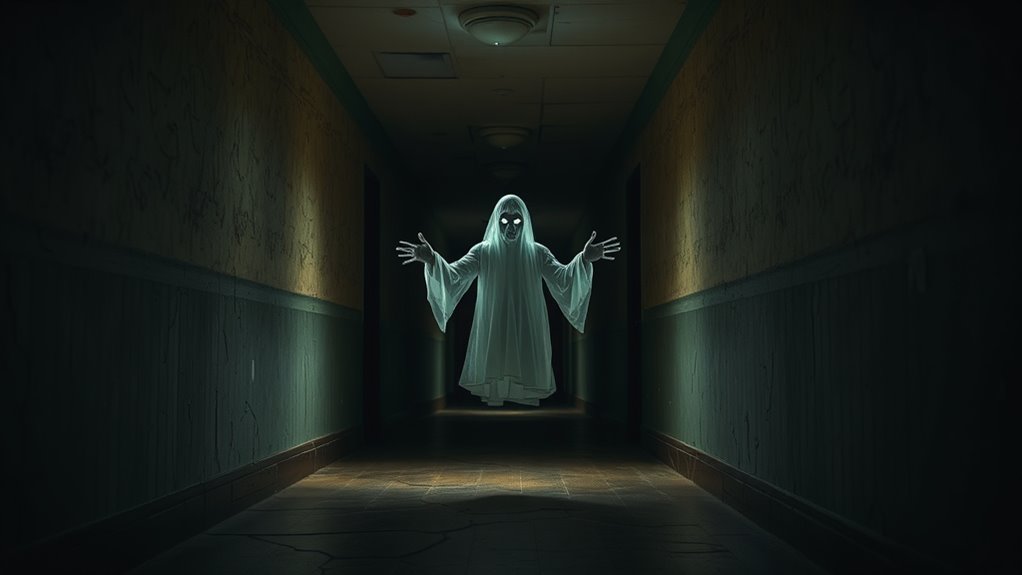
To protect yourself from harmful paranormal encounters, it’s essential to take proactive steps to establish safety and boundaries. Begin with spiritual protection, such as visualizing a protective white light surrounding you or using protective symbols that resonate with your beliefs. Regular energy cleansing can also help clear negative influences; smudging with sage or using sound healing techniques can refresh your energetic space. Trust your instincts—if something feels off, take immediate action to remove yourself from the situation. Maintain a calm mindset and avoid provoking or engaging with the entity. Remember, setting clear boundaries and practicing spiritual protection can greatly reduce the risk of harmful encounters, helping you feel secure and in control of your environment.
Frequently Asked Questions
Can a Spirit Change From Mischievous to Dangerous Over Time?
A spirit can change from mischievous to dangerous over time, especially if it becomes possessed or restless. Possessed entities often grow more aggressive if their energy isn’t addressed, and restless spirits may intensify their actions if disturbed or ignored. As you observe their behavior, remember that unresolved issues or negative energies might cause this shift, so it’s essential to approach these spirits with caution and seek professional help if needed.
Are Children More Susceptible to Harmful Spirits?
You might wonder if children are more susceptible to harmful spirits, and their child vulnerability plays a role. Their innocence and purity can make them more receptive to spirits, whether benign or malevolent. Because children often lack the experience to recognize or resist spiritual influences, they’re at greater risk. Protecting their innocence and understanding their unique vulnerability is essential to guarantee they’re safe from potentially harmful spirits.
What Cultural Beliefs Influence Perceptions of Dangerous Ghosts?
You might find it surprising, but cultural beliefs heavily influence how you perceive dangerous ghosts. Cultural legends and folklore interpretations shape your understanding of spirits, making some seem threatening based on stories from your background. You could interpret unusual encounters differently depending on your cultural context, which influences whether you see a ghost as malevolent or harmless. These beliefs create a framework that colors your perception of ghostly activity, often blending fact with tradition.
Can Environmental Factors Trigger Malevolent Spirit Activity?
Environmental triggers can indeed cause poltergeist disturbances, making spirits seem malevolent. You might notice unexplained noises, moving objects, or cold spots when certain environmental factors like electrical issues, structural weaknesses, or atmospheric changes occur. These triggers can amplify negative energy, leading you to perceive spirits as more dangerous. By addressing environmental causes, you might reduce such disturbances and better understand whether the activity is truly malevolent or just a result of natural factors.
Is It Possible for a Spirit to Seek Help or Communication?
You might wonder if spirits seek help or want to communicate. It’s possible that their intentions are to reach out or express unresolved feelings. They often use communication methods like EVP recordings, visual sightings, or physical sensations. By paying attention to these signs, you can better understand their true motives. Remember, not all spirits have malicious intent—some simply want to connect or find peace.
Conclusion
So, next time your ghostly roommate starts rearranging your furniture or whispering secrets, remember—mischievous spirits are just pranksters in spectral disguise. But if things get truly creepy, don’t hesitate to call in the pros. After all, who wants a mischievous ghost turning into a full-blown poltergeist party? Stay alert, stay safe, and maybe invest in some sage—because you never know when your playful spirit might decide to throw a real ghostly tantrum!

